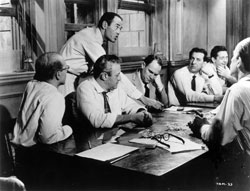This entry was written by Kris.
I’ll admit it: I’m obsessed with jars. I’m not a collector or anything, but I have a strange attraction to smooth glass objects, especially those I can fill with pickles or salsa, jams, tomato soup or summer fruit. Of course, canning jars are reusable, and J.D. and I have emptied many during our winter and spring meals, but I also gave about a hundred away last Christmas for various gifts and I wanted to replace them — cheap.
When our street had its annual garage sale last Thursday though Sunday, that was my quest: canning jars. I found a couple nice ones for $1 apiece up the road but they were “for pretty”, too old and irregular for actual use. I was still in need of jars for canning this year’s batches of goods when Amy Jo forwarded a Craiglist posting for jars for sale. I glanced through the ad — very detailed, lots of jars, decent prices — but it was farther than I wanted to drive. After deliberating, I decided to call anyway and see what was up.
“Hi,” I say “I’m calling about the jars you’re selling through Craiglist. I’m interested in buying some and wondered if I could come out today.”
“What kind of jars do you want?” asks a powerful male voice.
I explain that I want wide-mouth pints and half-pints.
“Fat chance,” he laughs, I’ve only got about nine cases of those — you better come today or there won’t be any left. How many do you want?”
Well, I want four or five cases, so it seems like there is plenty for me, but it makes me wonder: Are people thronging to this jar sale? Am I going to be left out?
Then he proceeds to quiz me on what I’m going to use the jars for. My answers (pickles, jams, salsas) meet only halfway approval. He is skeptical. I try to laugh it off and explain I also am interested in seeing some of his more decorative vintage jars. Again, I get the third degree.
“I won’t sell ’em to you if you’re using them for wedding candles or something and are just going to throw them away. You’ve got to understand, these are jars of quality.”
I reassure him. I get long and very detailed directions to his house.
Then he tells me to bring boxes. And he tells me exactly what kind of boxes to bring: whiskey bottle boxes and chardonnay boxes — with dividers. “Stop at the liquor store on your way,” he orders. “I won’t sell you any jars if you don’t have the right kind of boxes. And if your boxes are dirty, you’re not getting any jars.” Wow. Okay, now I want more than ever to meet this guy with the jars. I tell him I’ll be there around noon. J.D.’s up for the adventure and we pick up Rhonda, who actually knows a lot about jars and has a varied collection of her own, and head east. [J.D.’s note: Rhonda actually has a book about jars, a price guide. She’s the one who is obsessed.]
Upon arrival, I ring the doorbell. The three of us look up at a voice coming from the upstairs window and see a bearded face peering down. “I’m Kris,” I say, “I called about the jars.”
“Oh! You’re early! Let me put some pants on!” The time is exactly 11:53. We are seven minutes early.
Once he meets us at the garage, the jar-man’s first words are, “Let me see your boxes.” I cringe.
We have two boxes with dividers from my basement, but the boxes from the liquor store (which we were amazed was even open on a Sunday) are divider-less. For a moment, all hangs in the balance, and I fear he will turn us away. I hold my breath. But hurray, the boxes are at least clean and he permits us to stay and buy his jars.
For the next two hours, we hear more than we ever wanted to know about jars, lids to jars, boxes for jars, where to find old jars, how to clean jars, how to protect jars, what to use certain types of jars for, and so on. The jar-man knows jars. He is seemingly torn between the necessity of selling the jars (this appears to be his livelihood) and the overwhelming desire to keep every jar currently in his garage (which he numbers at 4000). We learn that Oregon is a much better source of old jars than his previous state of residence, California. And we learn why.
Boxes of jars and loose jars fill the garage. To show us the contents of any particular box involves moving the loose jars stacked on top of the boxes. When Rhonda and I try to help, he takes the jars from our hands. Wisely, J.D. (who is not clumsy), gets out of the way and assumes the task of carefully packing our purchased jars into our boxes according to the jar-man’s instructions (involving newspaper, strips of corrugated and brown paper sacks). We are not allowed to take the jar-man’s boxes, which are of a type that is not longer produced. I don’t really blame him, but it makes the purchasing and packing process very long.
Rhonda and I both choose some modern jars for canning and take a look at various types of run-of-the-mill vintage jars. The jar-man keeps a handwritten tally of our purchases.
After a while, the jar-man decides we are okay. He takes us inside to see the “good jars”. This is what Rhonda was hoping for. It appears he does actually have some rare collectible jars, but as he proudly shows them to us, one by one, he seems to decide they cannot be sold. Each jar is special and precious, and cannot be parted with. In the end, he does sell Rhonda two nice jars, not especially rare, but for a good price.
Time drags on and now I have seen enough to know which jars I want, but getting them is another story. It takes me almost another hour to wheedle and cajole him into releasing the jars. It is while he is tallying my purchases that I notice he is wearing two different shoes, both repaired. I can barely keep from laughing. Also, I keep noticing that for such an odd man, he appears to have surprisingly good teeth. I think at this point I am delirious for lack of lunch.
We make our way to the car but the jar-man follows, telling the tale of an old woman who has a monster load of jars, but she won’t sell them to him. “She thinks they’re worth way too much,” he sneers, “but wait till she drops dead. Her people will sell me the jars for cheap.” J.D. starts the engine, but the jar-man is still clinging to my open door. I make a move for the handle and he gets the message. I shout, “Thanks! Thanks for the great jars.” And I’m not kidding.
I am very happy with my jars; they are just what I was looking for, at a reasonable price, clean and in good shape. And although jar-man was odd, I sort of admire him. What a passion for jars! I imagine his frugal lifestyle, completely supported by jar commerce. Not a bad way to live. Now I really know what it’s like to be obsessed with jars.
[J.D.’s note: Two hours at the jar-man’s house was far too long for me, especially since I hadn’t eaten anything all day. I zoned out by taking in my surroundings. He had amazing tomato plants. And peppers. And nine eggplants. His home was sparesely furnished. The living room had red shag carpet, a seldom-used sectional, a stack of vinyl records, and boxes filled with rare jars. On the side of his fridge he kept a calendar on which he recorded the temperature three times each day, as well as the overall weather conditions and the amount of rainfall. The jar-man apparently did a lot of canning himself; his shelves were full of jams and jellies and pickles. His lawn needed to be mowed.]









